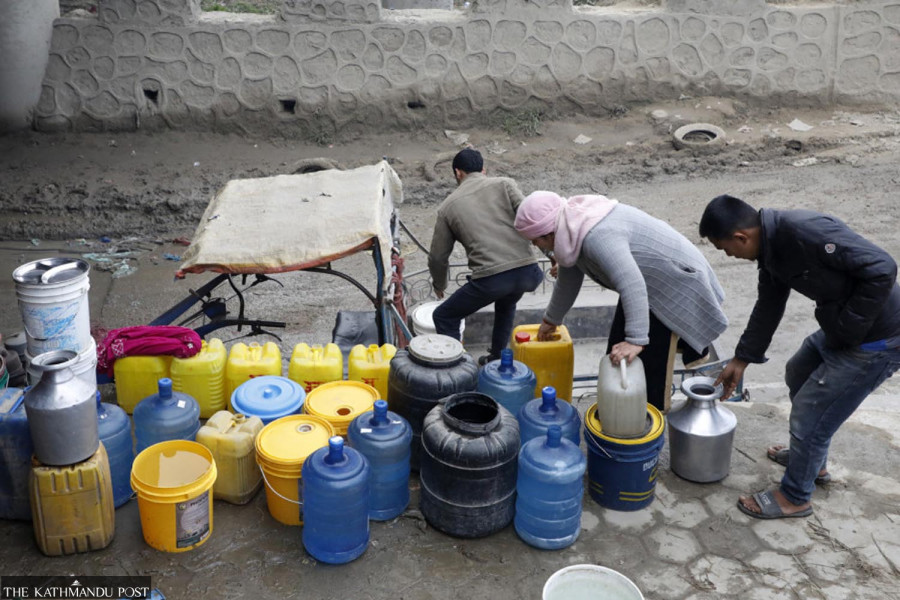Climate & Environment
Overextraction and shrinking open spaces cause groundwater depletion in Kathmandu Valley
Authorities plan to harvest rainwater at TU Teaching Hospital and other government buildings to replenish aquifers.
Arjun Poudel
All three deep borewells at the Tribhuvan University Teaching Hospital, Maharajgunj have gone defunct—the last one dried up some five months ago. Of the other two, one dried up some eight months ago and the other 18 months ago.
“All three borewells were more than 300 feet deep,” Dr Dinesh Kafle, executive director at the Hospital, told the Post. “One of them was drilled 40 years ago by the Japanese, when they built the hospital. The water has stopped coming out of it now.”
The problem of borewells and tubewells drying up is experienced in many places of Kathmandu Valley.
Over pumping of groundwater, shrinking open spaces, lack of rainfall for months, black-topping, and concretisation of roads and open spaces around homes are among the reasons for the depletion in groundwater in the Valley, according to experts.
“We got several complaints of wells, borewells and tubewells drying up and depletion of groundwater,” said Prabin Chandra KC, hydrogeologist at the Kathmandu Valley Water Supply Management Board. “Some people have also lodged complaints about the physical damage caused to residential houses due to massive extraction of groundwater by nearby factories and offices.”
Experts say the drying up of deep borewells on the hospital premises during the monsoon is alarming, because aquifers generally get replenished during the rainy season.
The Tribhuvan University Teaching Hospital had replaced the water pumps and cleaned the borewells, but such steps failed to pump water. Two shallow borewells were also dug up on the hospital premises after the deep borewells dried up, but submersible pumps could draw only muddy water.
“Patients do not use muddy water and it is also not appropriate to ask them to use whatever comes from hospital taps,” said Kafle. “The muddy water also damaged medical equipment. A lot of money is spent to change dialysis membranes (a semi-permeable film containing various sized pores) due to the muddy water.”
At the request of the hospital, which provides treatment to thousands of patients every day, the Kathmandu Upatyaka Khanepani Limited has connected a three-inch pipeline to the hospital, but the problem is that the utility does not supply water regularly.
Officials at the Kathmandu Valley Water Supply Management Board said several institutions and the general public have been facing problems due to the wells, tube wells and borewells gone dry.
“Our own study carried out in the past showed that the groundwater in Kathmandu Valley has been depleting,” said KC, the hydrogeologist. “There were fewer problems in the northern part of the Valley, including Budhanilkantha and Tokha areas, but depletion is serious in the central part of the Valley.”
While open spaces in the Valley are shrinking, which prevents the aquifers from recharging, the problem of natural springs, wells and borewells drying up has become acute, experts say.
To recharge groundwater, Kathmandu Valley Water Supply Management Board has launched a pilot to harvest rainwater in government buildings including government schools and hospitals.
“We have allocated a budget to harvest rainwater at the Tribhuvan University Teaching Hospital and in a few schools in the Valley this fiscal year,” said Radha Dhakal, an official at the board. “Almost all households in the Valley have their own borewells but very few have left space to recharge groundwater, which is a major problem.”




 18.12°C Kathmandu
18.12°C Kathmandu











